Start your engines, fellow treasure hunters, because today we’re embarking on a wild ride through the world of dusty heirlooms, once-grand relics, and those “vintage” pieces your grandma swore would make you rich—but spoiler alert: they’re basically worthless now. You’ve seen them lurking in your parents’ attic, at estate sales, or on that one Instagram page that specializes in sad old stuff, and you’ve thought, “This could be my ticket to the big time.” Well, buckle up. From tarnished tea sets to creepy dolls, these 17 antiques are officially out of favor, out of style, and out of luck. No more daydreaming about quitting your job to become a full-time picker—your only realistic hope is maybe using them as quirky doorstops.
1. Silver-Plated Tea Sets
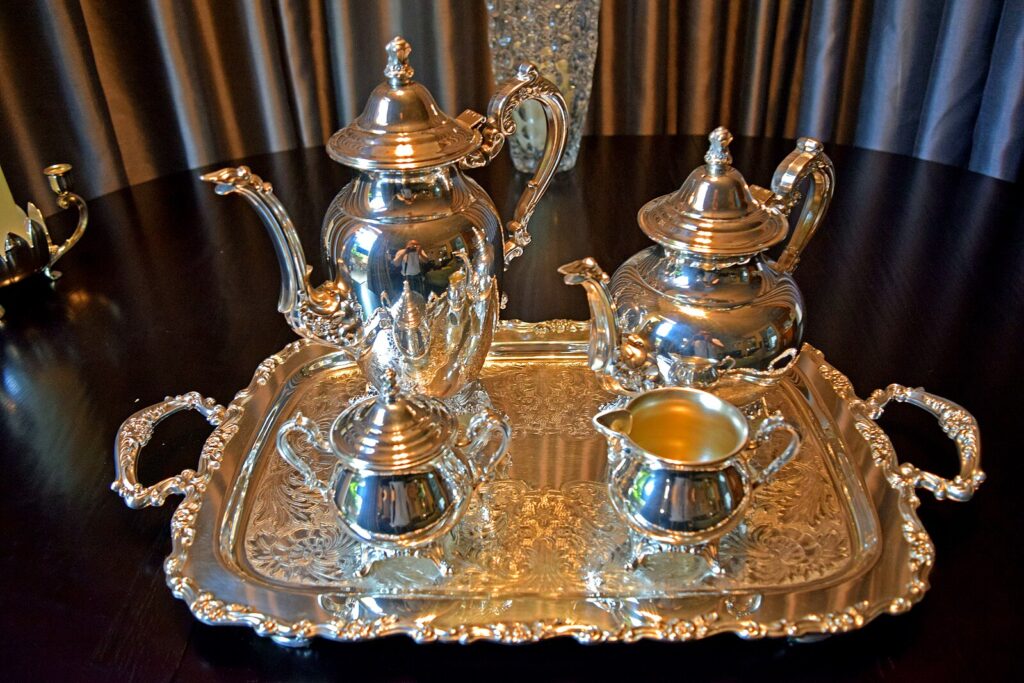
If you’ve ever inherited grandma’s fancy tea service, you know it’s heavy, it’s tarnished, and it’s collecting dust faster than you can say “Earl Grey.” It’s My Nest recently noted that mass-produced silver-plated tea sets have plummeted in desirability—people want practicality over pomp, and lugging around a full tea service just isn’t “Instagrammable.” Back in the day, these gleaming trays and teapots were status symbols; now they’re trip hazards in suburban basements. The plates get dings, the spoons get lost, and the whole thing looks like a half-hearted attempt at elegance rather than genuine craftsmanship. Unless you’ve got sterling silver stamped with a Maker’s mark, your “treasure” is more likely to be recycled for scrap than auctioned for big bucks. In short, if your only claim to fame is “Hey, my family had one of these,” you might want to rethink your collector dreams.
Tea parties themselves have fallen out of fashion—nobody has the time or the table space for a three-course etiquette affair in 2025. Millennials would rather stream a cooking show while eating avocado toast than fuss over fine china. And let’s be honest: cleaning silver is a chore even your most organized friend avoids. The market is flooded, resale prices hover near zero, and local thrift shops will probably just give you store credit. So yeah, for silver-plated tea sets, the glamour days are officially over.
2. Wooden Cuckoo Clocks
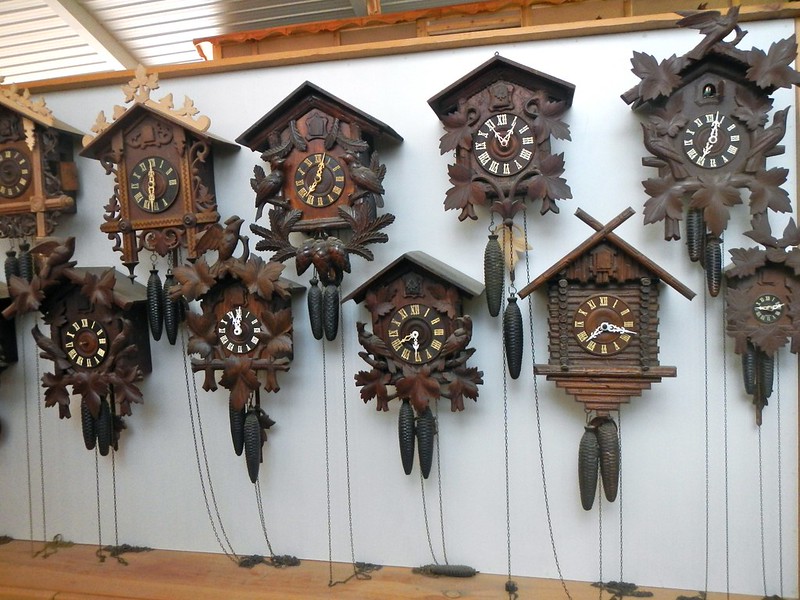
Remember when everyone’s vacation snapshots featured a giant cuckoo clock in some quaint little German shop window? Now, that same piece is considered more “annoying alarm” than “rustic charm.” A Medium deep-dive on vintage value trends explains that modern buyers don’t have time to wind up a clock—why bother when your phone does it for you? That rhythmic “tick-tock” that once felt soothing now just feels like white noise you can’t mute. These clocks require constant maintenance—oiling, adjusting weights, and ensuring the bird pops out on time—none of which aligns with a millennial’s idea of “low-effort décor.”
Plus, let’s face it: in a world obsessed with minimalism and sleek lines, the ornate carvings and pendulums of a cuckoo clock look a bit barbaric. The mechanisms inside get gummed up, the wood can warp, and good luck finding a repair person who knows what they’re doing. You can try selling it on Etsy, but buyers there prefer handcrafted planners and breakout planters—not a dust-collecting, “once upon a time” timepiece.
3. Porcelain Dolls
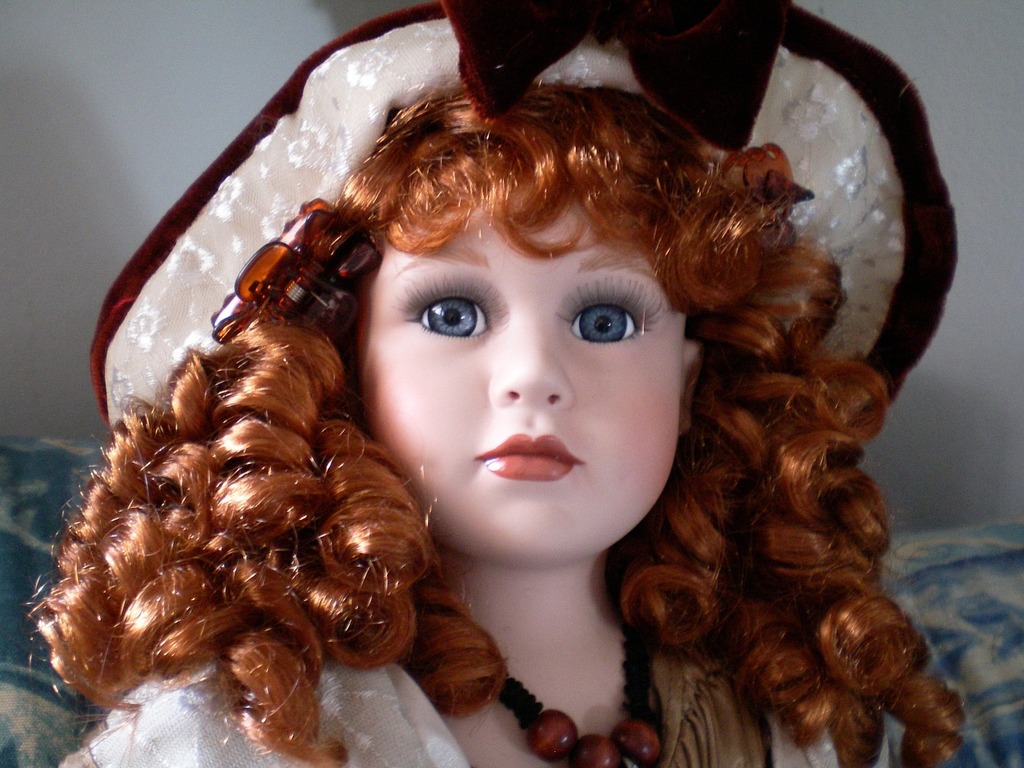
If porcelain dolls ever gave you the creeps, you’re not alone—and the rest of the world agrees. Cheapism runs down how these dolls, once prized for delicate painting and frilly outfits, now mostly fetch pennies. Their faces are too lifelike (read: unsettling), their wardrobes too fussy, and they require climate-controlled display cases to avoid cracking. Casual collectors don’t want to invest in a future hair-raising horror décor piece, and toy dealers aren’t interested in shelves full of chipped china heads.
Kids today want interactive toys—robots, tablets, pop-its, you name it—so your porcelain collection ends up in the “creepy” corner rather than the “coveted” one. They break if you so much as blink in their direction and need special glue for repairs. Even nostalgic boomers are downsizing, and they’d rather prize a first-edition Grisham novel than another crack-fest doll.
4. Crystal Decanters
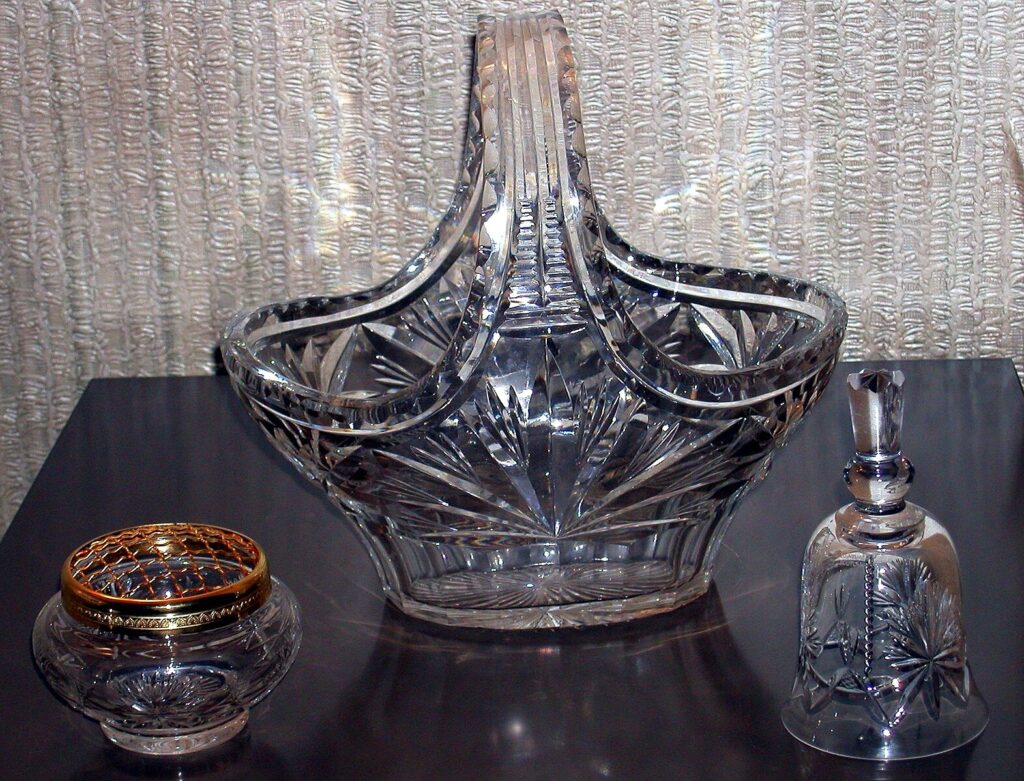
Pouring wine through a crystal decanter might feel classy, but most people just pour straight from the bottle and call it a night. According to TheStreet, ornate crystal decanters have lost their “wow” factor—glass-on-glass rings don’t impress when you’re juggling a phone, a glass, and a dog leash. These beauties often end up chipped after one nice dinner party and spend the rest of eternity as dust collectors.
They’re also heavy, hard to store, and require careful hand-washing. Millennials are all about “dishwasher safe” and “low maintenance,” and crystal decanters are neither. Unless you’re dealing with a very rare maker, your “heirloom” will probably be donated faster than you can say “vintage.”
5. Hummel Figurines
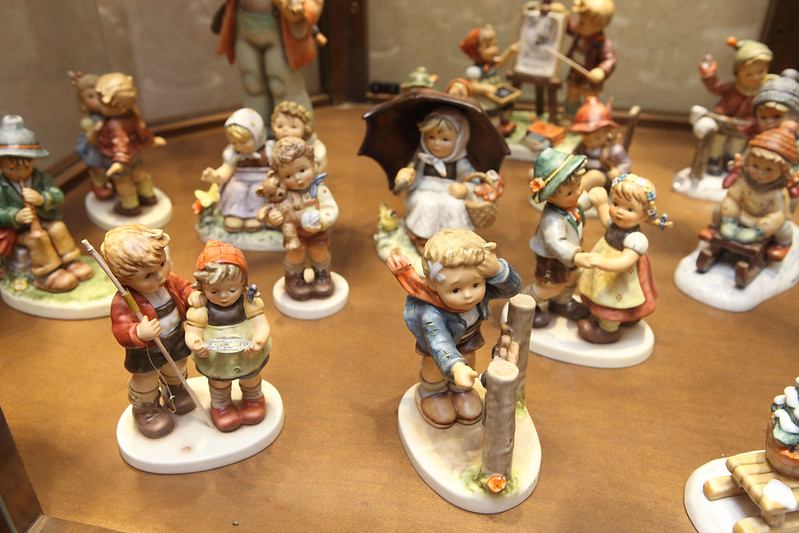
Hummel figurines used to be grandma’s gateway into collecting, but now they just say “your house has too many knickknacks.” Business Insider points out that mass-market production and oversaturation have tanked their value—there’s simply one too many little hand-painted kids to go around. The fine details that once made them special now look like cookie-cutter charm.
They’re tiny, fragile, and require dusting with a fine brush. If you wanted delicate, you’d have bought a bonsai tree; at least that grows. And while nostalgia is cute, it doesn’t pay the bills. In today’s DIY and upcycling world, a plastic planter looks cooler than a shelf of nondescript figurines.
6. Antique Dining Room Furniture
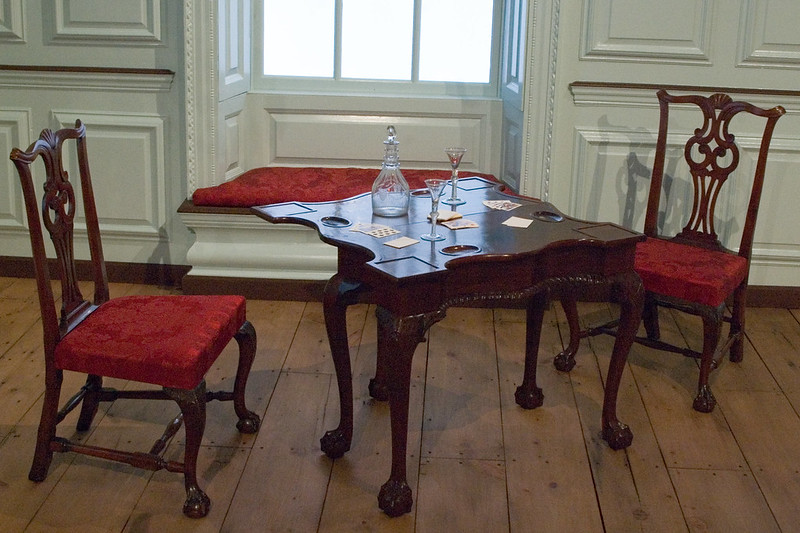
Wooden dining sets that once hosted Thanksgiving turkey feasts now sit in sprawling open-plan homes gathering dust. Meals have migrated to breakfast bars, couches, and coffee tables, leaving formal tables feeling antiquated. Mahogany sideboards and ornate chairs were once status symbols, but today they scream “I need more storage” rather than “I live my best life.” The sheer bulk of these pieces makes them a nightmare to move—hello, hiring movers—and creates a permanent commitment to layout and décor. Even if you find a buyer, they’re likely to haggle you down into giving it away for free. Modern homes favor multifunctional furniture—think extendable picnic tables, not carved walnut monstrosities. Formal dining rooms are as rare as landline phones, so your investment is basically locked in time and space.
And then there’s the style mismatch—mid-century modern is having a moment, not Queen Anne. If your table doesn’t fold, expand, or double as a workspace, it’s getting skipped. Plus, with more people living in apartments, there’s simply no room for a 12-seater set with claw-foot chairs. Most resale platforms are flooded with listings for these dinosaurs, and very few bites. Even antique dealers are turning them away. If you can’t fit it into a Honda Civic, it’s not making the cut. At this point, your best bet might be upcycling it into firewood or turning it into a funky kitchen island.
7. Glassware
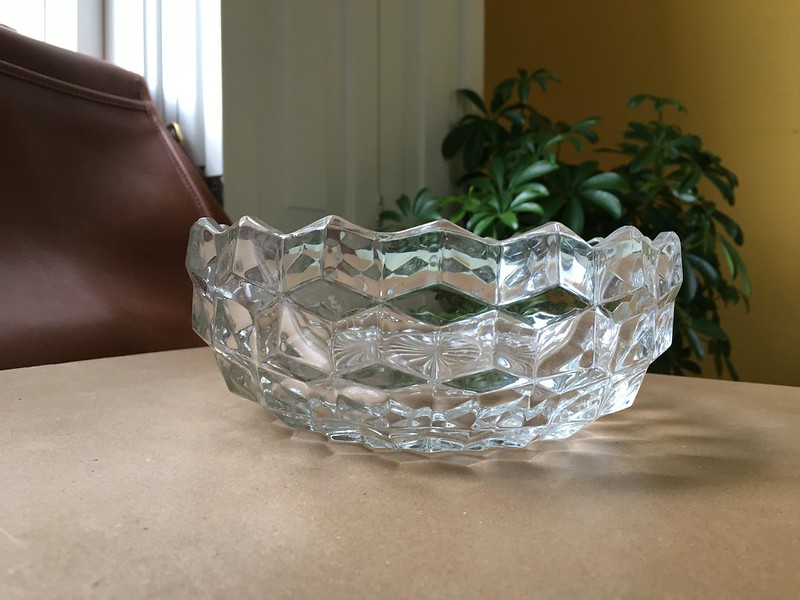
Cut glass crystal and milk glass collections once gleamed in china cabinets, but today millennials prefer minimal dishware they can stack in tiny apartments. Clear glass sets flood thrift shops, and nobody pays attention to brand names unless it’s a super-rare designer collaboration. China patterns that grandma loved now look like wallpaper samples in plate form. Fancy etched designs gather fingerprints and require delicate washing—two strikes for anyone on a cleaning strike. Market saturation has crashed prices so low you’d be better off melting it down for craft projects. Rare art glass still finds buyers, but that’s not what your aunt passed down in her silver-lined boxes.
People just don’t entertain like they used to—wine in a mason jar is peak modern elegance. Most vintage glasses don’t even hold a full pour, which, frankly, is unacceptable. Add in the anxiety of chipping one during a dinner party, and the appeal plummets. Even Goodwill has started turning down entire boxes of the stuff. Unless you’re curating a vintage tablescape for TikTok, nobody’s asking for dessert goblets anymore. Resellers often leave boxes untouched for weeks, even at bargain-basement prices. If you’re clinging to your carnival glass collection, maybe it’s time to turn it into a mosaic backsplash instead.
8. Clocks

Grandpa’s longcase clock may be a family legend, but nobody has the patience for winding weights or repairing those finicky movements. Phones, laptops, and even microwaves tell time more accurately than a century-old pendulum. Advertising clocks and quirky mid-century designs still have niche appeal, but the standard wood-cased mantel clock is practically unsellable. At auction, these pieces often fail to meet their reserve and get returned to basements. Repairs can cost more than a brand-new modern clock, and parts are scarce. The aesthetic clash between ornate cases and minimalist interiors leaves them out in the cold.
Even thrift store shoppers skip past them with a hard “nope.” Gen Z and millennials want clean, quiet homes—no clunking, ticking, or spooky midnight chimes. Also, nobody under 50 knows how to fix a broken chime mechanism, and YouTube tutorials won’t save you. Unless your clock starred in a movie or belonged to a president, its resale value is dismal. They’re too fragile to ship and too big to store. A decorative clock is one thing, but a literal grandfather standing guard in your hallway? Not the vibe. Your best shot might be selling it as a steampunk cosplay prop.
9. African Art and Fakes
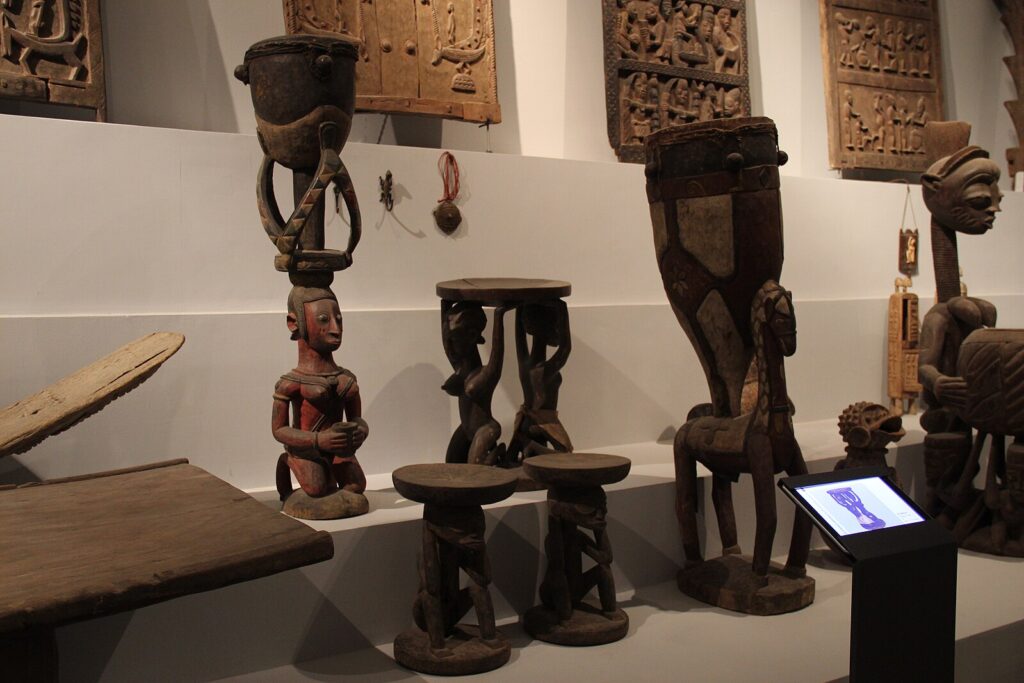
Authentic African masks and figurines still command respect, but the market is so flooded with fakes that buyers won’t touch anything without exhaustive provenance. Chinese bronzes and porcelain suffer the same fate—counterfeit factories churn out convincing knockoffs that tank confidence in the real deal. Collectors burned by fakes move on to more transparent markets like comics or sneakers. Even legit pieces get bundled in “ethnic art” grabs, selling at fraction-of-value prices. Digging up paperwork from the ’70s is a chore no one wants to undertake. Without clear histories, these once-exotic showpieces are treated like liability rather than assets.
Aesthetically, they no longer mesh with current décor trends like Japandi or Scandinavian minimalism. The bold colors and ceremonial features are seen as overpowering or too on-the-nose. Cultural appropriation concerns also play a role—buyers tread lightly, fearing they’re displaying something sacred incorrectly. Museums are even tightening up acquisition policies. So unless you can prove lineage and significance, it’s unlikely your piece is doing more than gathering dust. It’s a shame, because some of these works are genuinely beautiful and rich in history. But beauty alone doesn’t cut it in the modern market.
10. Antique Sewing Machines
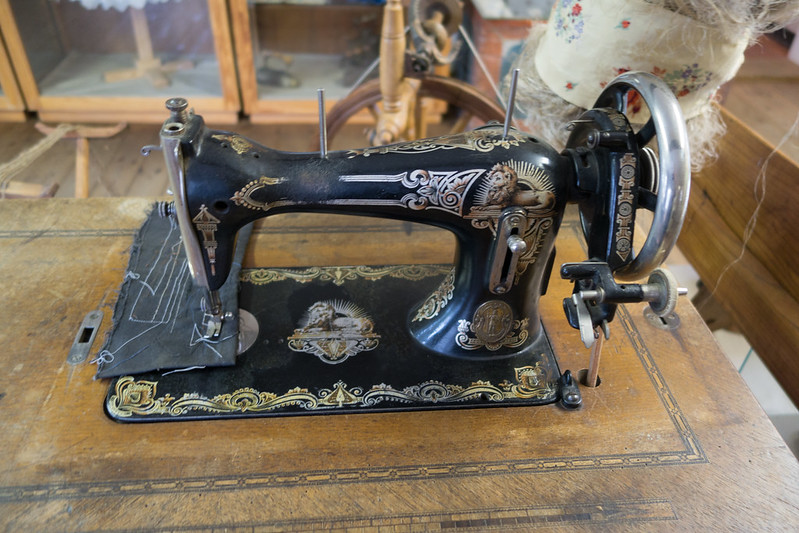
Those treadle-powered antique sewing machines look cool—until you try to move one. They’re heavy, they creak, and half the world’s seamstresses use computerized models these days. Vintage Singers still sell on eBay, but the old wooden tables add zero to the price. Demand has slumped because modern machines do it all—embroidery, buttonholes, you name it. Repairs require elusive parts, and not everyone knows how to oil a bobbin case properly. Unless you’re catering to Shabby-Chic decorators, nobody wants that bulky relic in their workspace.
They make lovely plant stands, though—silver lining for DIYers looking for a quirky base. Some crafters gut them and turn the cast-iron frames into industrial-chic furniture. Others keep them purely for vibes, like a Pinterest board come to life. But functional value? That ship has sailed. Even vintage textile artists prefer more compact, efficient gear. And if it’s not operational, forget it—it’s just furniture now. At best, it’s a conversation piece with nowhere to go.
11. Beanie Babies
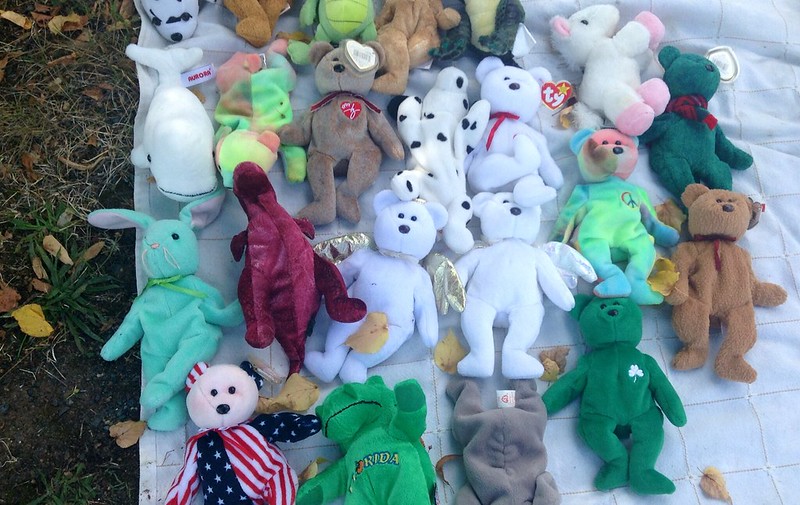
Once you couldn’t buy a Beanie Baby, and now you can’t sell one for more than loose change. These plush toys peaked in the ’90s, but the market’s completely crashed. Only the rarest prototypes ever scrape $50, and good luck verifying authenticity. Most people see them as childhood clutter, not a future windfall. The “collectible craze” collapsed when production outpaced demand. Now they’re bulk-sold for pennies on resale sites. Sorting through molds and tags feels like archaeology with zero payoff.
Unless you have a rare “Princess” or “Peanut the Royal Blue Elephant,” your Beanies are just beanies. And even those have to be in mint condition, authenticated, and ideally stored in acrylic cases since 1998. Spoiler: yours probably aren’t. If the tags are bent, faded, or missing, the value drops to “free with purchase.” There are entire Reddit threads dedicated to debunking Beanie Baby fortune myths. These days, they’re more likely to be repurposed into quirky art projects. Or, more realistically, they’re going in a donation bin.
12. Barbie Dolls
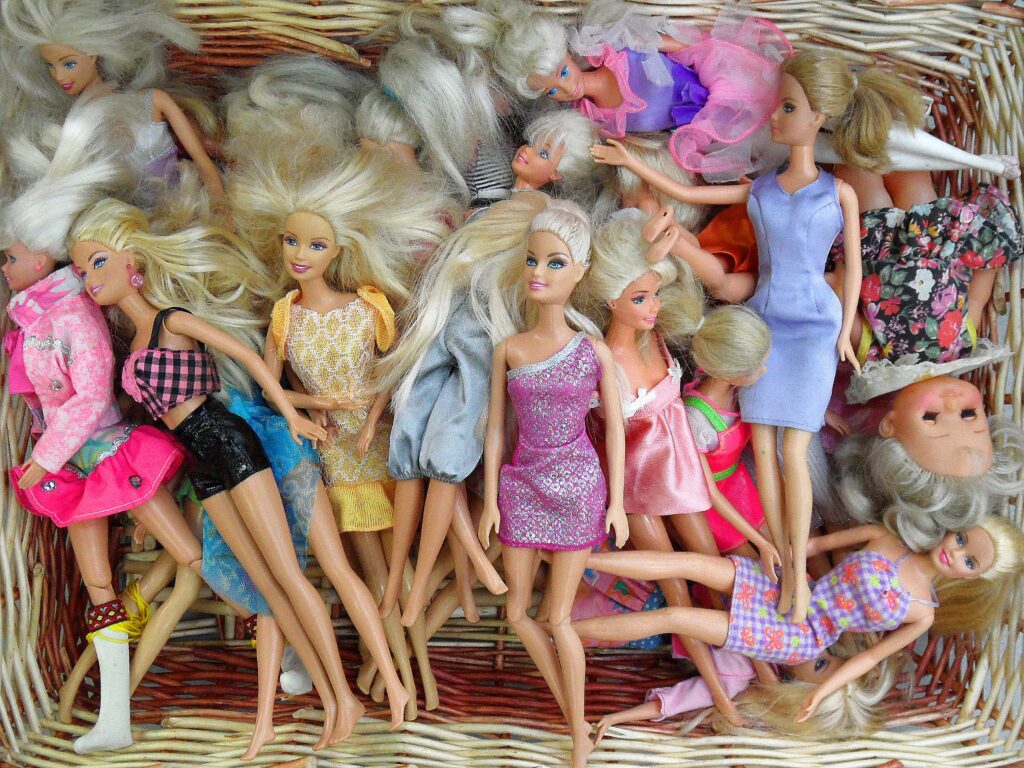
Vintage Barbies once traded hands for hundreds, but most 1959–1967 models are now selling for a few dozen dollars at best. The craze fizzled when reproduction parts flooded the market. Surviving outfits may hold some value, but dolls themselves often get discarded. Mattel produced billions, so rarity is painfully scarce. Even boxed sets rarely break four figures. Collectors chase perfection—no scratches, original packaging, unopened—good luck finding that.
Most sellers settle for “as-is” on eBay. Modern Barbie fans prefer new collaborations or inclusive lines over stiff-limbed nostalgia. Haircuts, marker stains, and missing shoes are the kiss of death. Unless you’re sitting on a pristine, unboxed #1 Barbie, don’t expect a windfall. The dream house might still hold some resale value—but only if it’s not missing all the furniture. Otherwise, you’re stuck with what amounts to a very fashionable paperweight. Better to pass them on to a child who’ll actually play with them.
13. Vintage Band T-Shirts
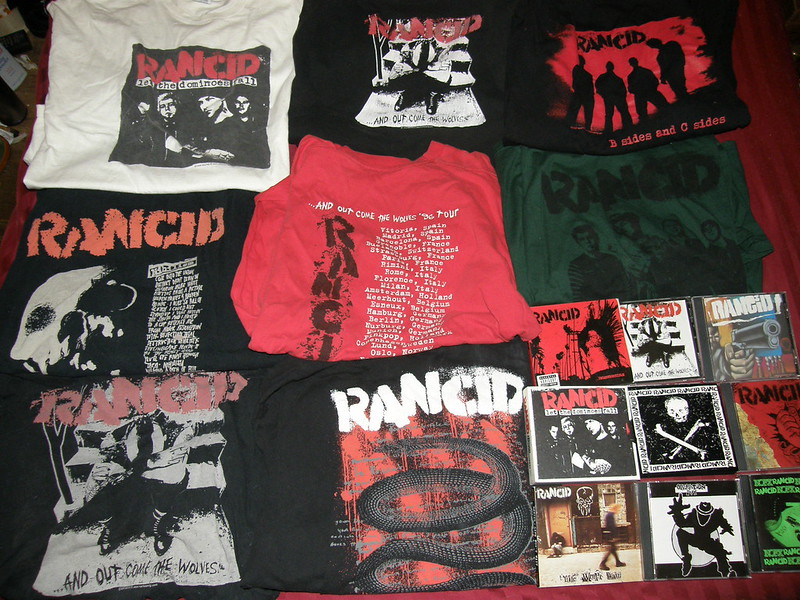
Rock-and-roll tees from the ’70s and ’80s looked like gold mines—until too many people realized the same. Modern reprints flood the market, diluting authenticity. Unless the shirt is from a one-off show or rare pressing, you’re stuck with a $10 sale. Paper-thin fabric and screen-print cracks scare collectors away. Even famous bands like Pink Floyd and Led Zeppelin tees hover at bargain bin prices. The few true rarities go to museum exhibitions, not your garage sale.
Most vintage tees are stretched, pitted, or permanently sweat-stained—hard pass for fashionistas. If it’s not wearable, it’s not sellable. That sentimental shirt you wore to Bonnaroo 2004? It’s a pajama top now. Iron-on transfers have also faded beyond recognition. Plus, people care more about fit than label these days. Oversized is in, but not if it’s full of holes. Basically, unless it’s Nirvana at CBGB’s, keep it for nostalgia.
14. Vinyl Records

Sure, vinyl is back—but not every record. Mass-pressed rock LPs from the ’70s are usually worth just a few dollars. Dusty stacks of Eagles and Boston rarely fetch more than shipping costs. Condition is king—scratches, warps, and sleeve damage tank value instantly. Collector-grade rares sell, but you need deep knowledge to spot them. Pressing details, label variations, and regional releases matter more than the band name.
The average listener streams music anyway, so the collector pool is shrinking. Estate sale bins are overflowing with unloved records. Unless you’re selling punk pressings or early hip-hop, demand is low. Even classics like Fleetwood Mac’s Rumours are too common to fetch anything meaningful. If it says “Columbia House Exclusive,” just toss it. Or better yet, turn it into a funky clock. That’s about the extent of its value.
15. Avon Bottles
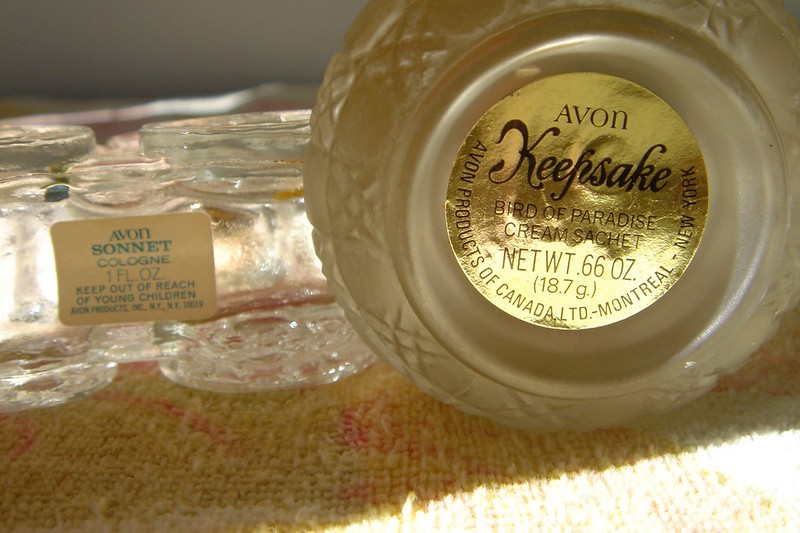
Those cute little Avon novelty bottles might look Instagram-worthy, but the fragrance biz shifted to sleek spray bottles years ago. Collectors are scarce, and mismatched stoppers leak. Most pieces sell for under $5, even rare holiday editions. The bulk often ends up as cabinet décor in spa-themed Airbnbs, not a collector’s shelf. Unless you find a mint condition limited-edition, it’s fun but worthless. Gifting them feels like re-gifted re-gifts.
The market is oversaturated with glass cars, animals, and boots full of cologne residue. Even antique shops avoid them now. Younger buyers don’t recognize the brands or care about the history. Most of them smell like your great-aunt’s powder room. And once the label wears off, good luck identifying what it even was. At best, they’re quirky bathroom ornaments. At worst, they’re clutter you forgot you even owned.
16. Carnival Glass
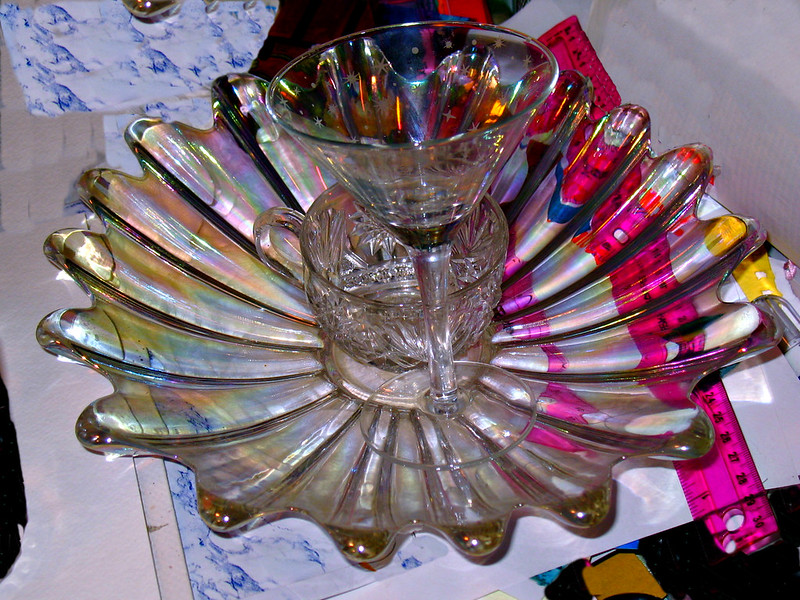
That kaleidoscope sheen once dazzled at county fairs, but today carnival glass is more carnival leftover. It’s everywhere, and most patterns aren’t especially rare. Scratches ruin the iridescent coating, and repair experts are non-existent. Resale prices tank at thrift-store levels. True rarities exist, but you need a seasoned eye to spot them. Otherwise, it’s just colorful clutter.
They look pretty on a shelf… until you realize they clash with literally everything. Modern home design leans neutral, not rainbow shimmer. Younger buyers have no clue what it is and often assume it’s costume party glassware. Plus, it’s fragile and chips if you even look at it wrong. Try finding a replacement if your favorite piece breaks—spoiler: you won’t. Sentimental value? Sure. Market value? Practically zero.
This article is for informational purposes only and should not be construed as financial advice. Consult a financial professional before making investment or other financial decisions. The author and publisher make no warranties of any kind.








